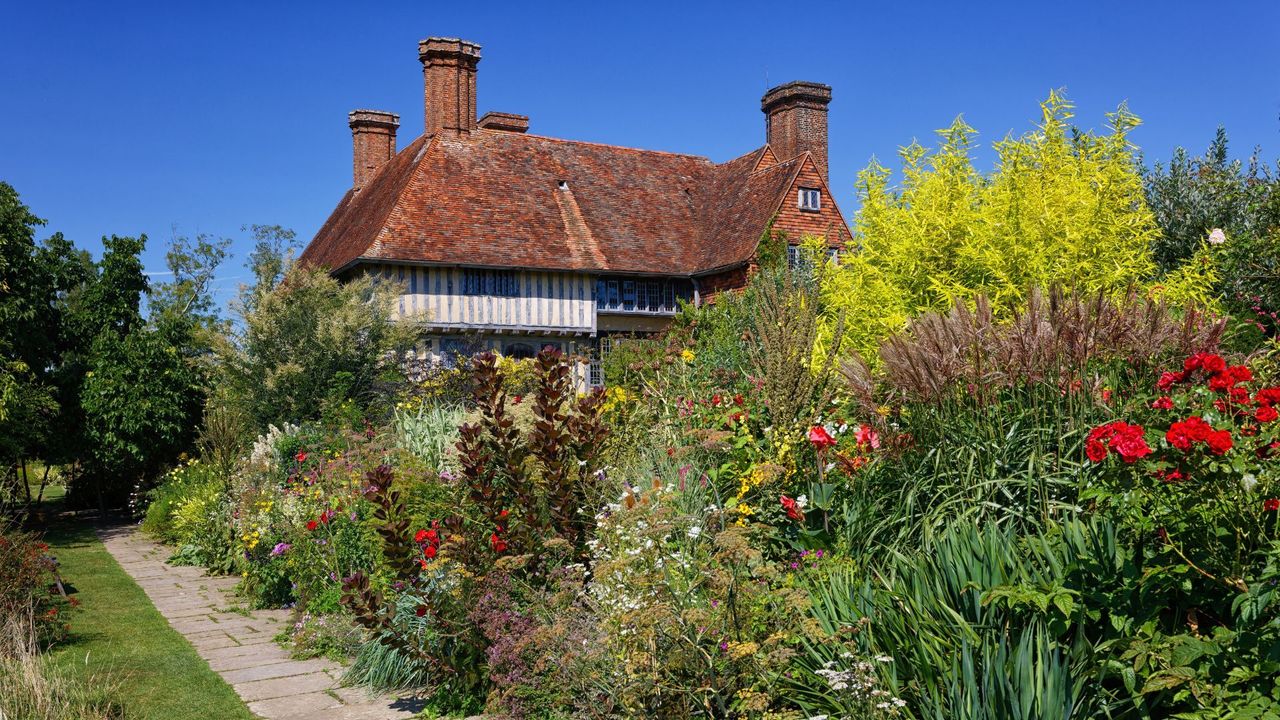
Nestled into the bucolic countryside in East Sussex, England, Great Dixter is a breathtaking 15th-century manor house with a garden of world renown. Known for being one of the most impressive Gardens in the British Isles, it is a place of seminal importance alongside Sissinghurst and Hidcote as the iconic 20th-century British gardens.
The Head Gardener, Fergus Garrett, is both meticulous and refreshingly hands off – a delicate balance even the most skillful gardener finds hard to achieve. When I visited Great Dixter this summer, I was bewildered by the riot of color, texture, and intensity of the planting. If there were ever a place teeming with garden ideas worth copying, this is it.
Simply put, it is one of the most influential gardens I have ever visited. Here are some of my key takeaways from Great Dixter – ideas that are sure to enrich and enliven garden schemes, each a lesson in carefully managed non-interference.
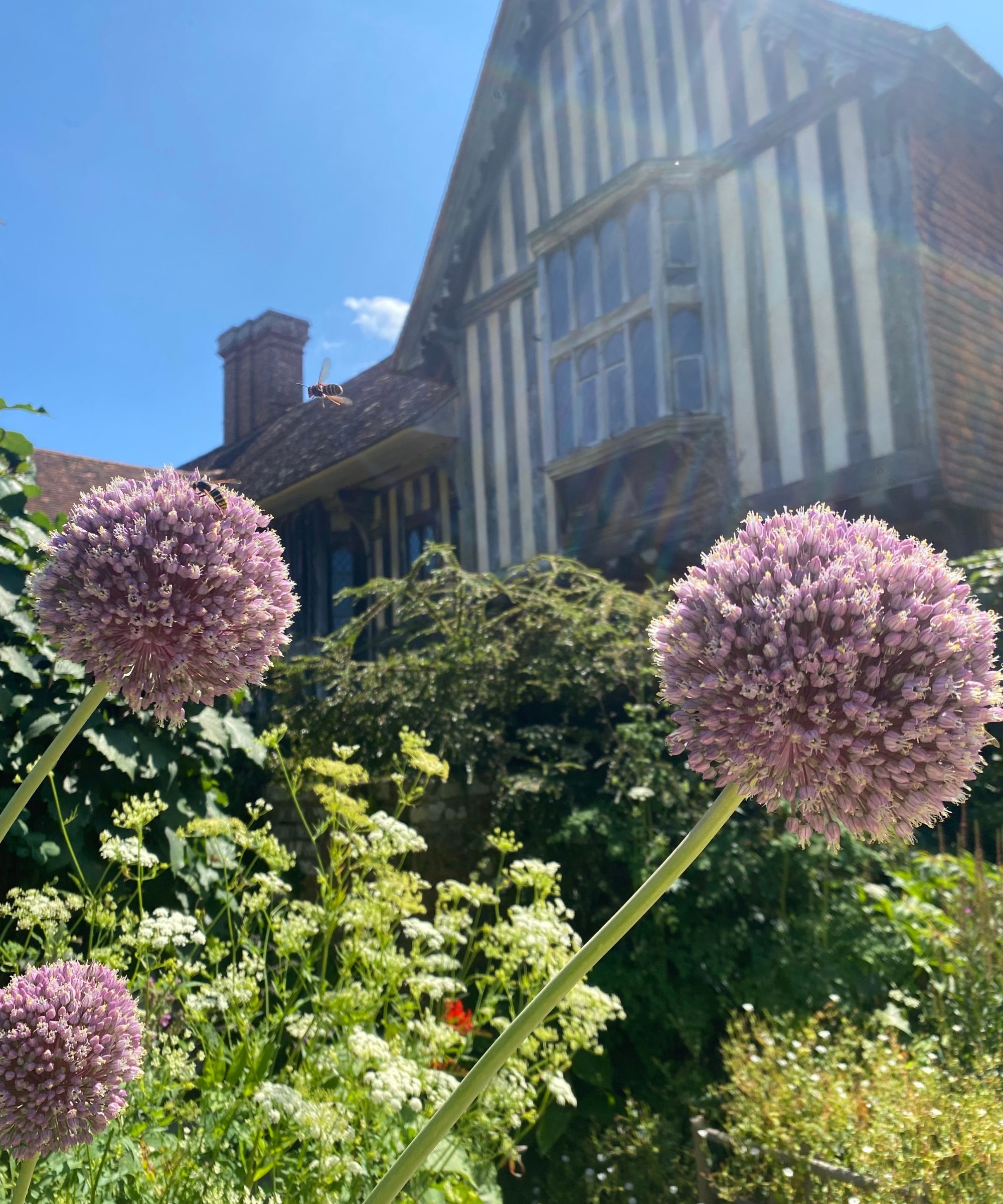
Scripted Chaos

'Scripted chaos' is the term dubbed by the gardening team at Great Dixter that perfectly describes the ordered disorder that works so beautifully in these gardens.
If you have ever heard of chaos gardening, this is much the same principle, whereby nature is allowed to take much more control than you usually see in formal gardens.
Plants tumble out of borders and into pathways, clamber and climb in the most unusual and unhelpful of places, self-seed without constraint, and grow to incomprehensible sizes and heights. Though, in reality, this isn't chaos at all.
The context might be steeped in English history, yet the gardens at Great Dixter are liberated from it and are a contemporary interpretation.
Nothing here is constrained by old-fashioned rules and techniques. The planting philosophy is somewhat anarchical; the garden is effervescent with color and fragrance, and nothing is held back from reaching its full potential. It is the most evocative garden I have ever been immersed in. It feels as though the garden has well and truly taken over.
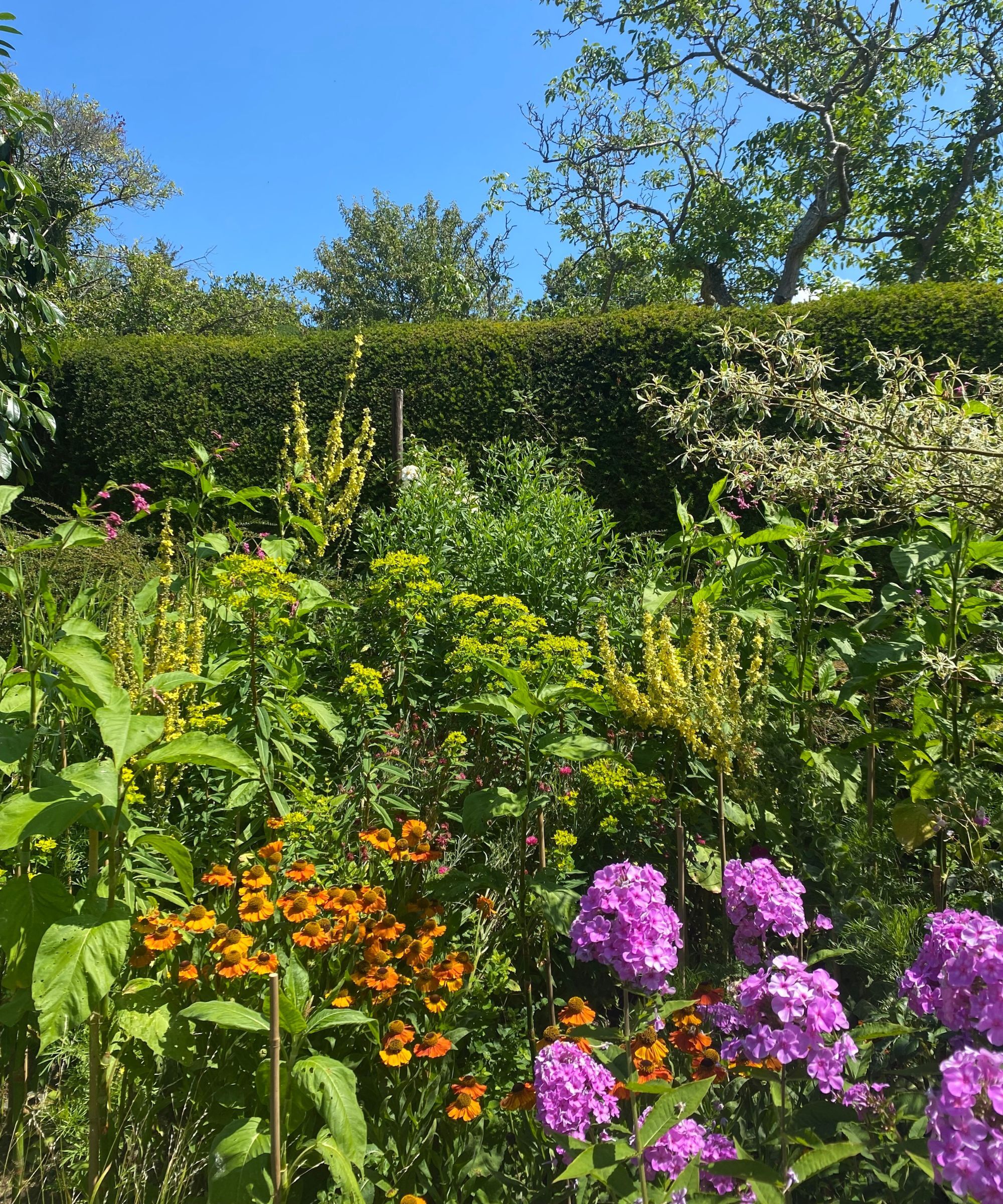
However, far from an unwieldy mess, the borders at Great Dixter are tumultuously romantic, the color choices are poised and thoughtful, and the sparks and lilts of floral interest are held together with good bones of topiary and purposeful shrubs.
The expert companion planting is one giveaway that a plantsperson with skill is overseeing the 'chaos'. Considering the needs of an unnaturally integrated group of plant species brought together by design is an extremely challenging skill, and to achieve such a theatrical display of planting is in fact the result of an awful lot of hard work, horticultural knowledge, and judiciously planned planting strategy.
To achieve the look that everything is unplanned yet somehow looks perfect is, in fact, the result of intense and rigorous planning.
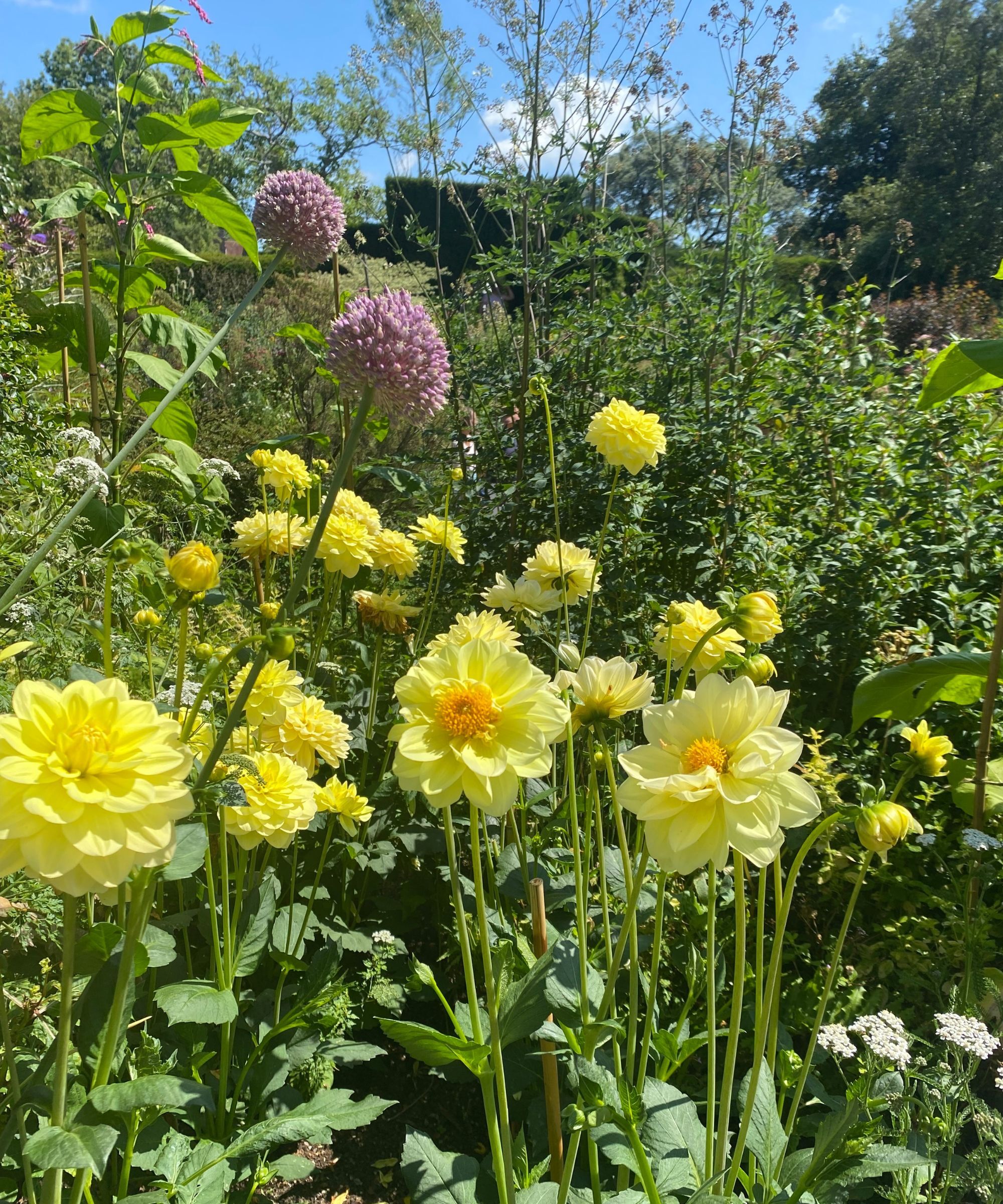
Refrain from deadheading and let plants go to seed
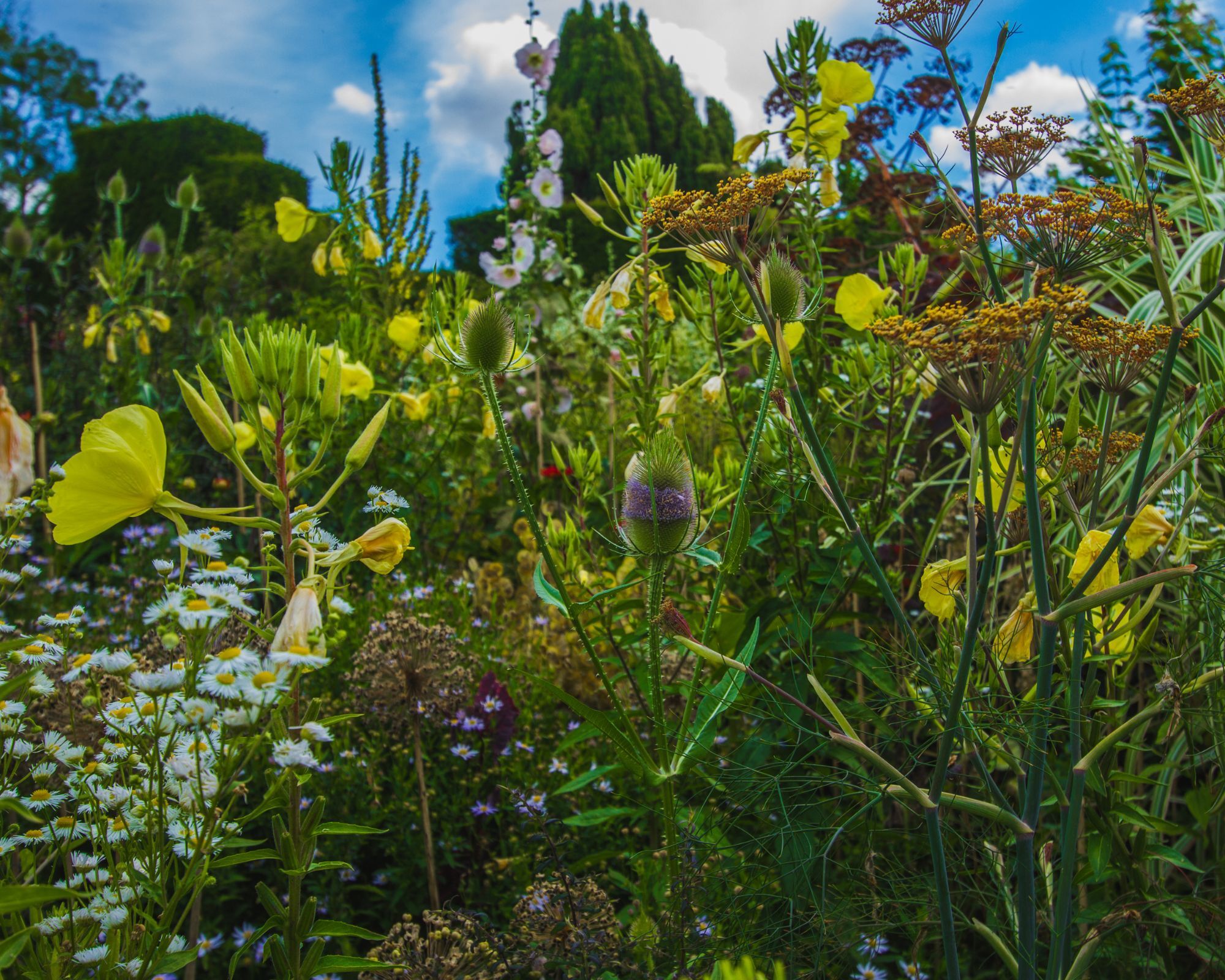
I'm always on the hunt for wildlife garden ideas. I like flower beds not only to be an explosion of color and texture, but also to be aflutter with butterflies and humming with well-fed bees.
I grow plants for pollinators, always incorporate a naturalistic planting design in any flower bed I'm working on, and I never, ever use chemical pesticides. Admittedly, though, my need for aesthetic refinement often takes over, and I have always been trigger-happy with the secateurs.
I love to deadhead regularly throughout the growing season to prolong the flowering period of my beloved plants. Great Dixter has made me rethink this strategy. The act of gardening can be a hindrance to increasing biodiversity, and sometimes, leaving plants to fulfil their full life cycle is the best thing you can do. But, leaving plants to go to seed is not just for the bees and butterflies, but to prolong the visual interest of my garden, too.
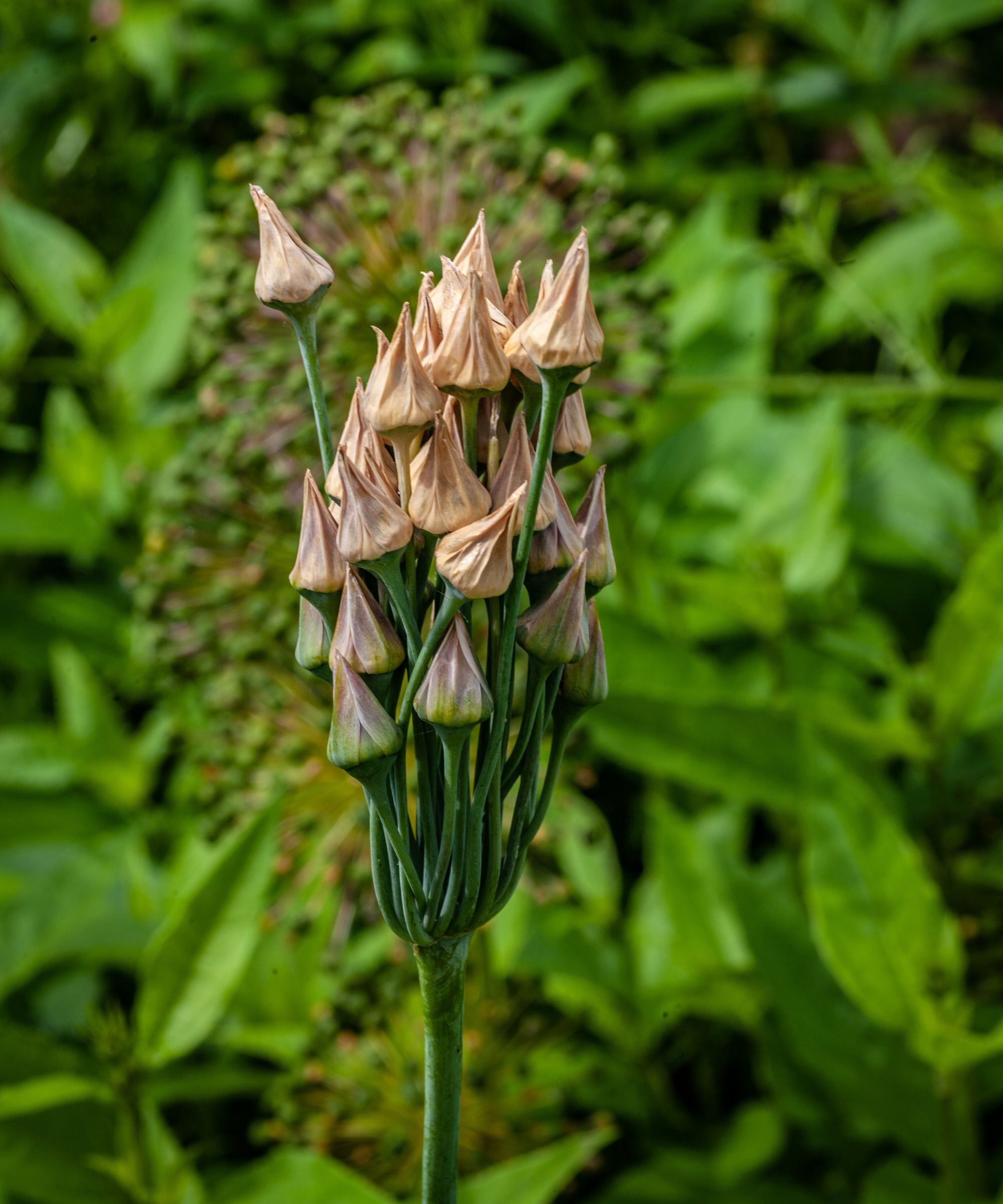
I wait with bated breath all year for the summer explosion of flowers in my garden, yet somehow at Great Dixter, their garden remains visually exciting all year round, not just in the summer months. This is very much owing to their soft touch with gardening.
The framework of the garden stays in tact long after flowers have finished blooming. Refraining from cutting back and deadheading results in the most beautiful architectural seedheads persisting into winter, providing sustenance for a wide range of insects and small mammals. Not only does leaving the seedheads provide food for birds and insects, but the structure is an ornamental feature in its own right.
Around Great Dixter, I saw many plants allowed to go to seed: sweet peas, alliums, hollyhocks, fennel flowers, lunaria, masses of Sicilian honey garlic, thistles of all kinds, towering spires of Great mullein, soaring to the sky, several feet taller than me. This year I am going to give my garden secateurs a year off, I think.
Hollyhock seeds are available to order from Amazon.
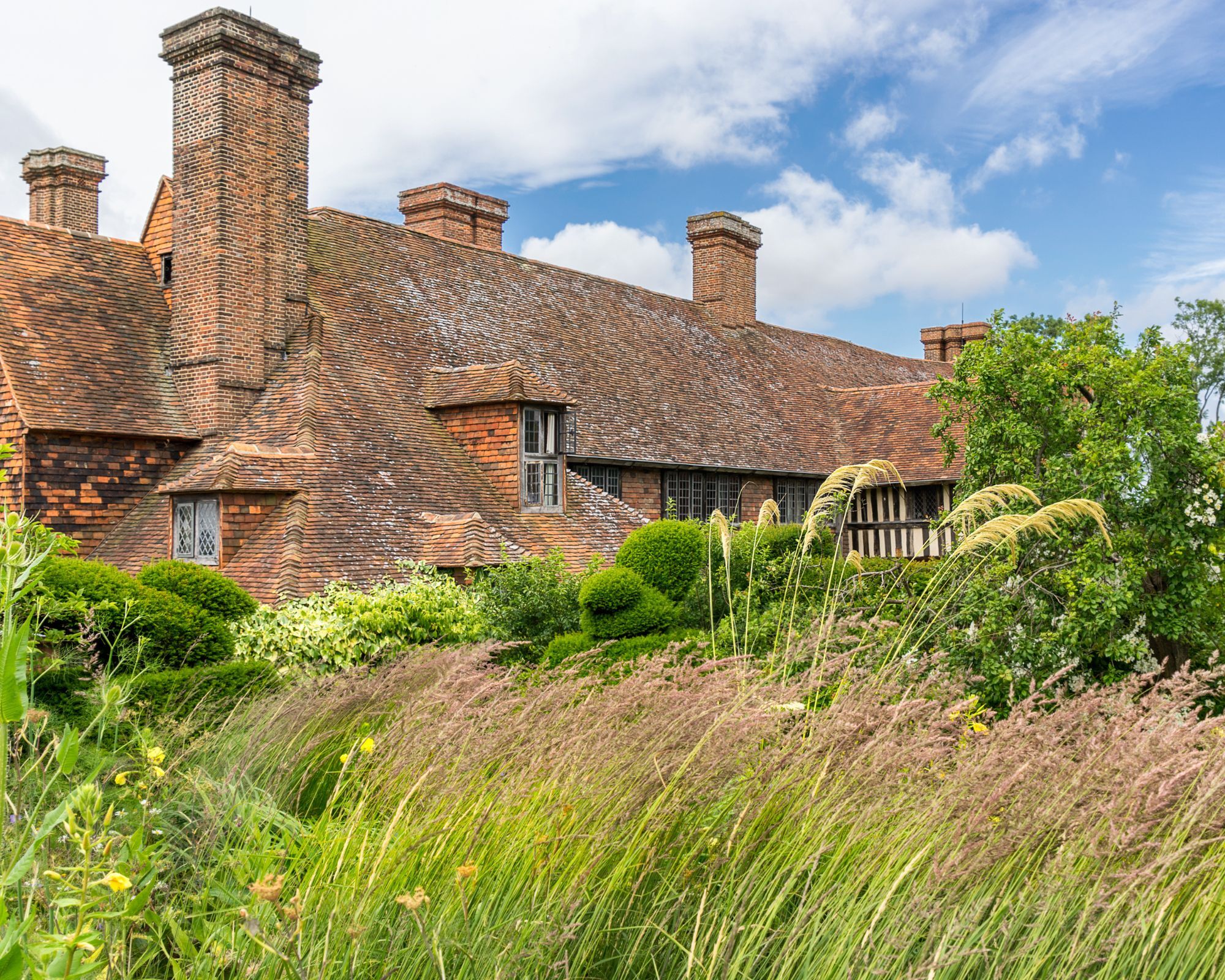
Bring tall plants to the border's front

The borders at Great Dixter are so voluptuous and overflowing with flowers and foliage that it can be tricky to meander along the pathways.
The borders are choc-full and there are so many flower bed ideas to draw inspiration from, it's mind-boggling. The thing that made the biggest impression on me, though, was their unusual use of tall, lofty plants at the front of the border, and smaller plants at the back, quite the opposite of what you usually see.
Normally, when we want to plan a garden or put our garden border ideas into action, it makes sense for the tallest plants to live at the back of the border, and the height of the plants to gradually reduce in size moving toward the front of the border, so onlookers get a view of all of the planting.
This is very much the done thing at most gardens I visit, so perhaps it is one of the reasons Great Dixter is so mesmerising when you first step inside the garden. The rule book has well and truly been ripped up and discarded. The borders look unusual and unexpected, a total feast for the eyes.
For a tall plant in your space, try growing foxgloves, with seeds available from Amazon.
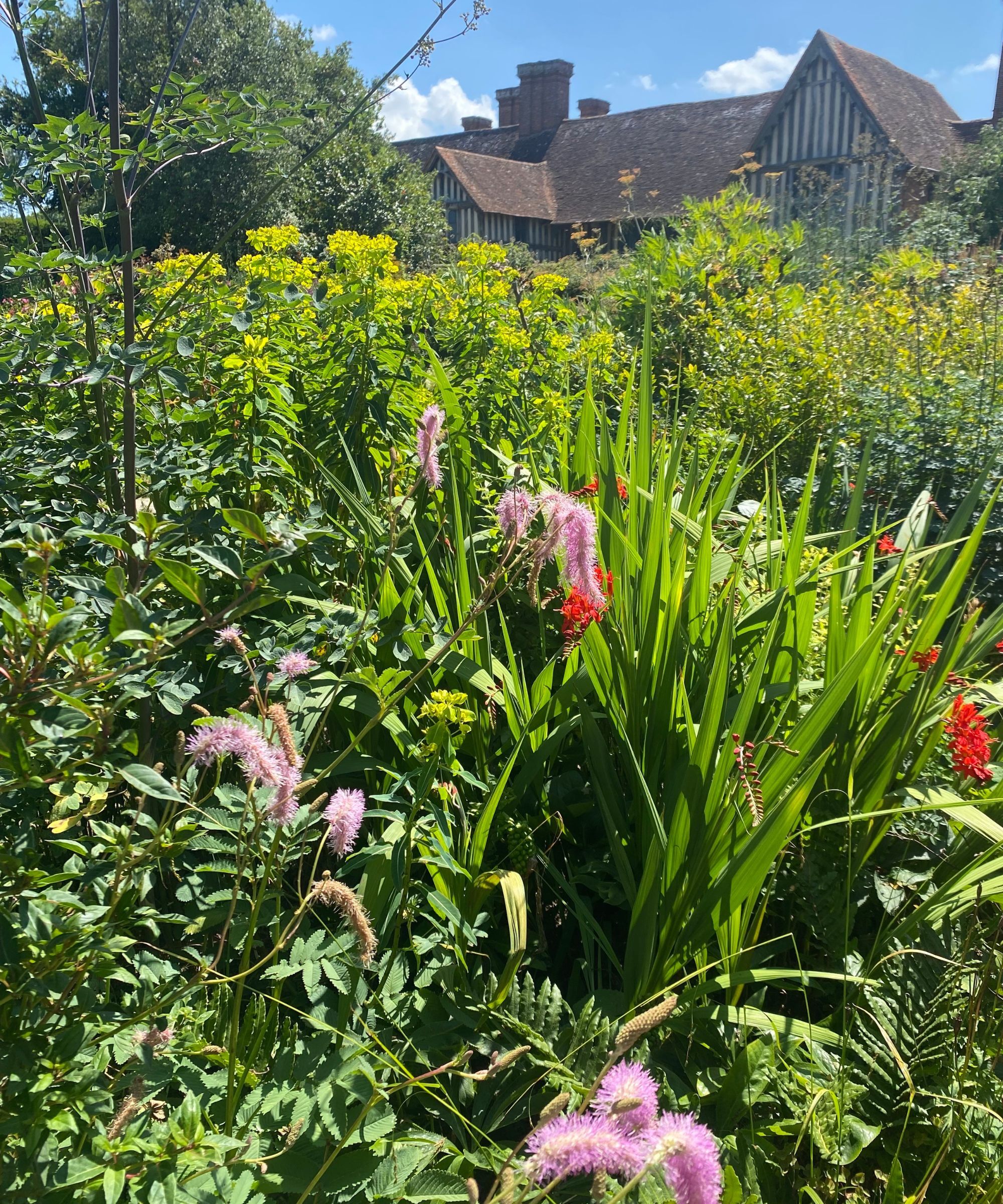
Many plants are rhythmically placed through sumptuous borders, no matter their size, so long as they don't entirely block one's view of the plants behind. In Christopher Lloyd’s words, 'I do not at all mind bringing some tall plants to the border’s front, so long as an open texture allows the eye to see past them.'
By adding layers of height in unexpected ways, it forces you to stop and look around, peer behind, around, or over things. Your eye cannot take everything in in a blink, so you're forced to slow down and stay a while.
A beautiful book about Christopher Lloyd, icon and iconoclast of the gardening world, owner of Great Dixter alongside mesmerising photographs of the garden.
Great Dixter is a reminder that technical understanding of plants and their vagaries will only get you so far when designing a garden. At some point, you have to cut loose and fly.







